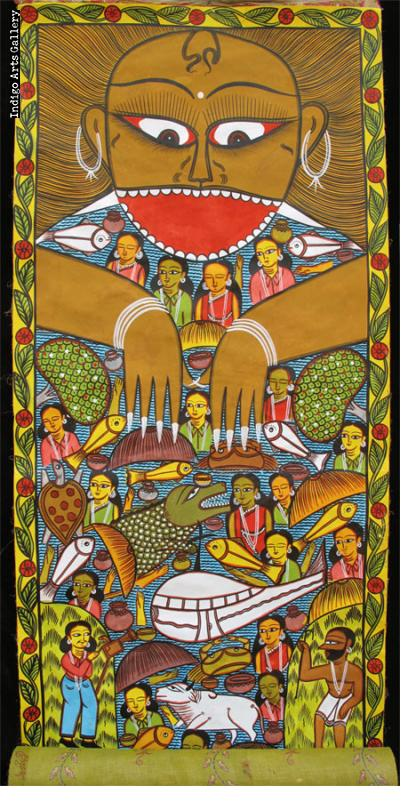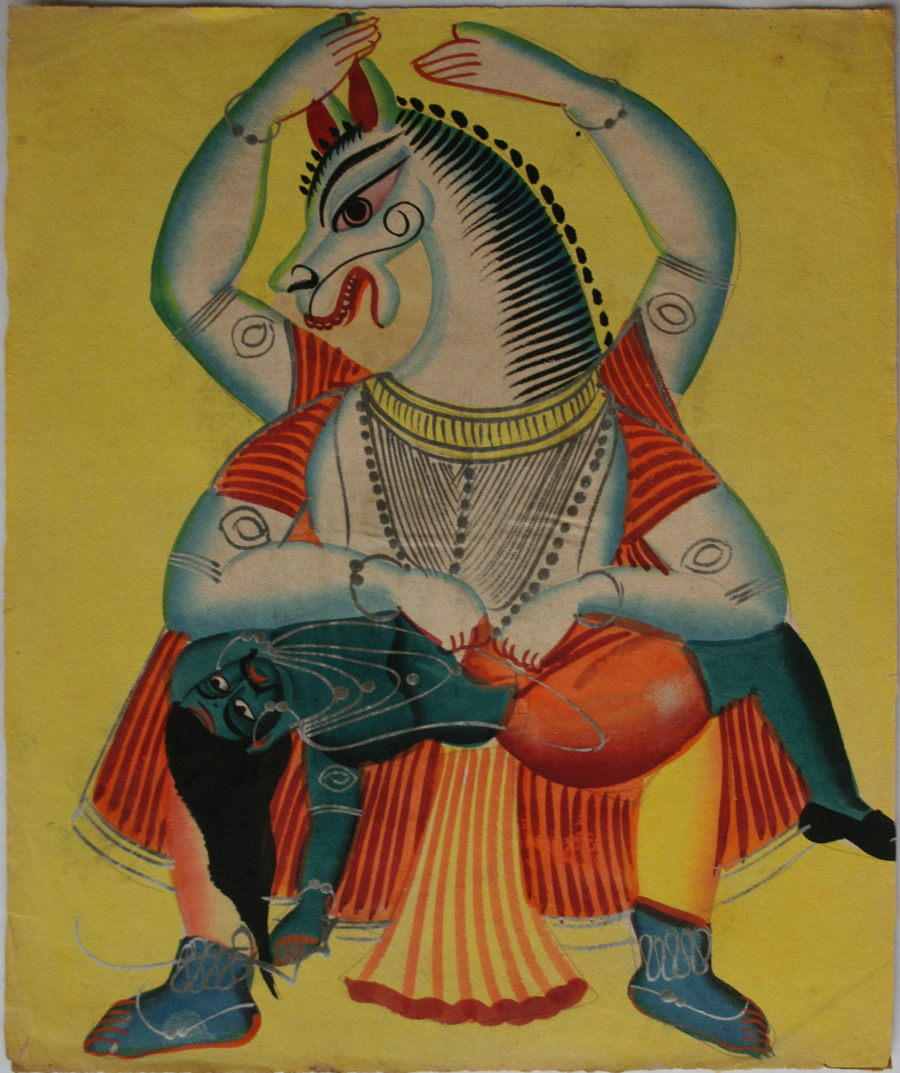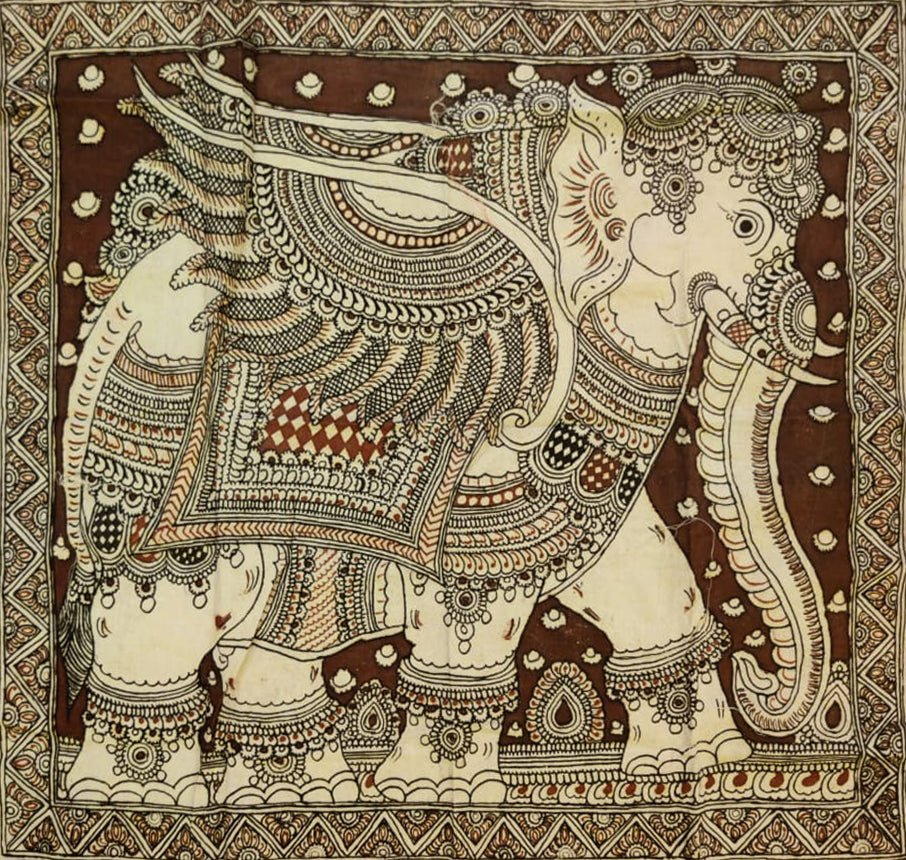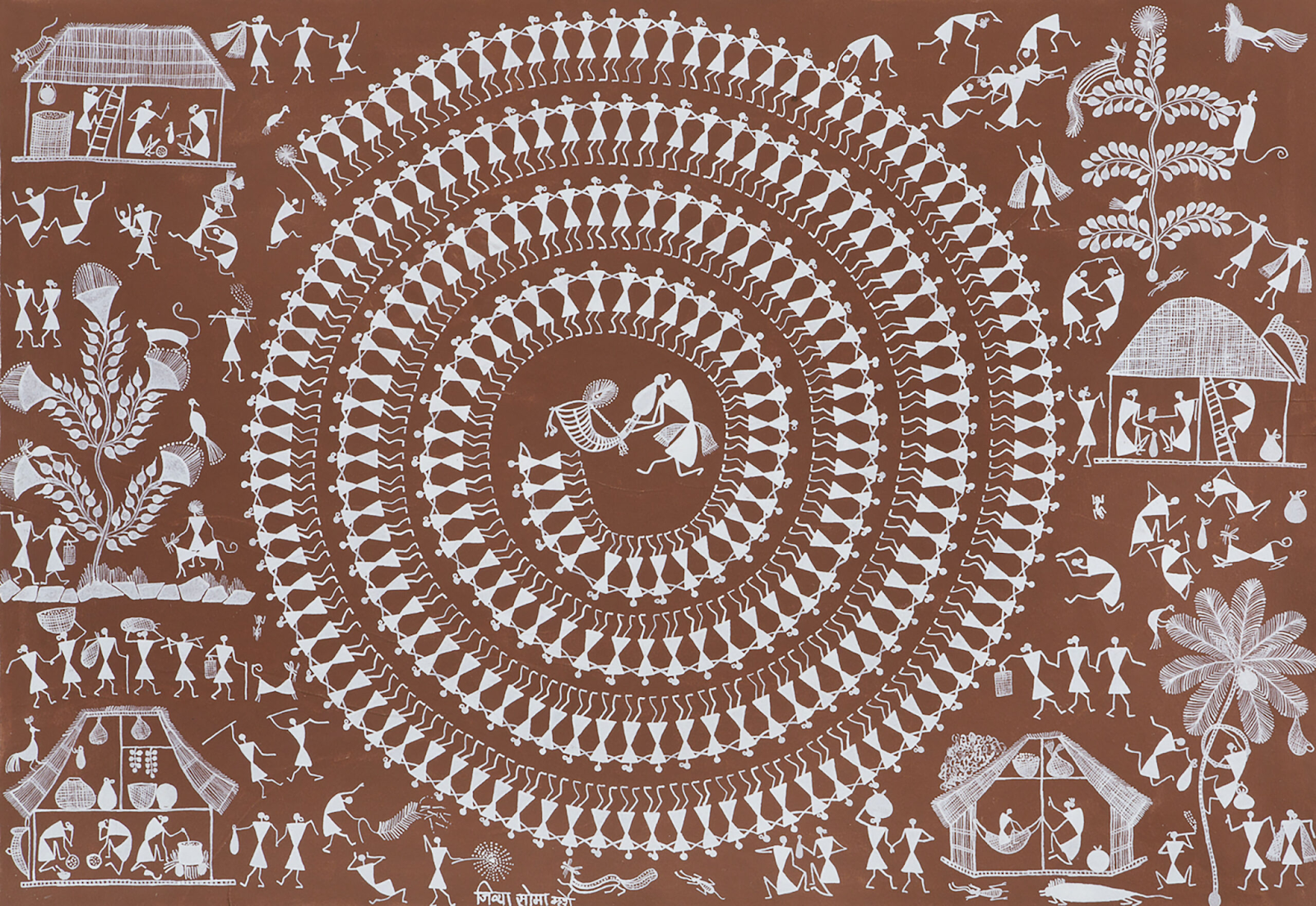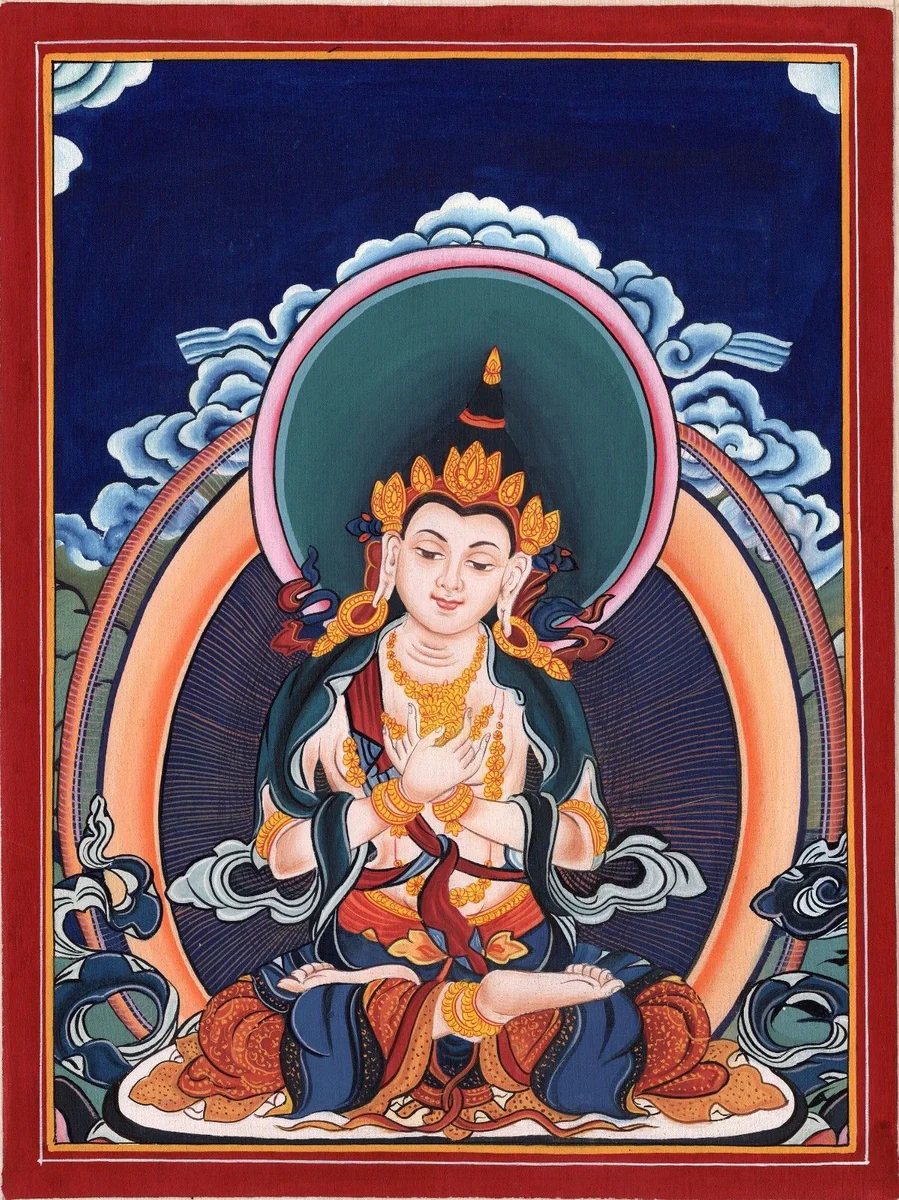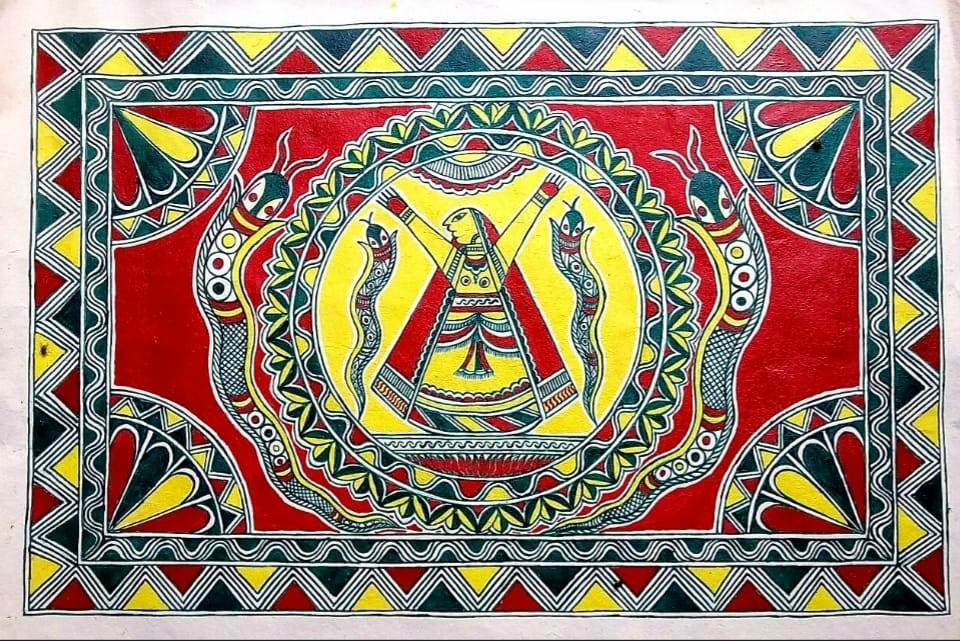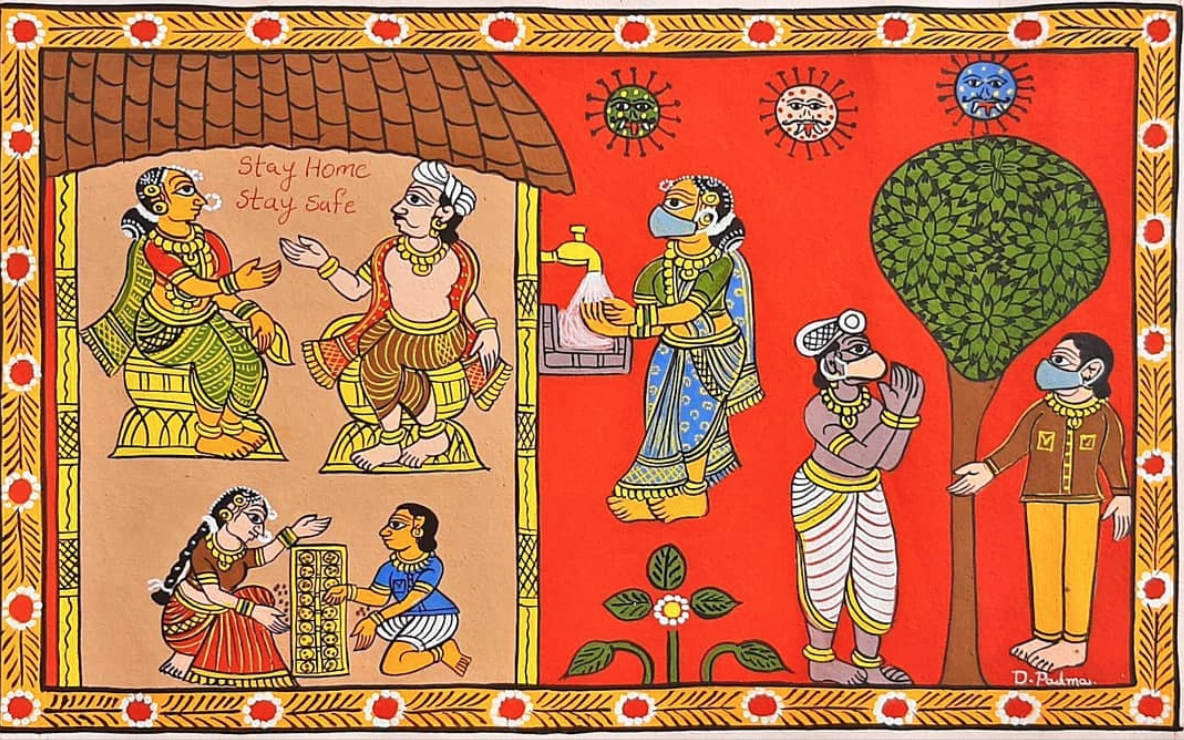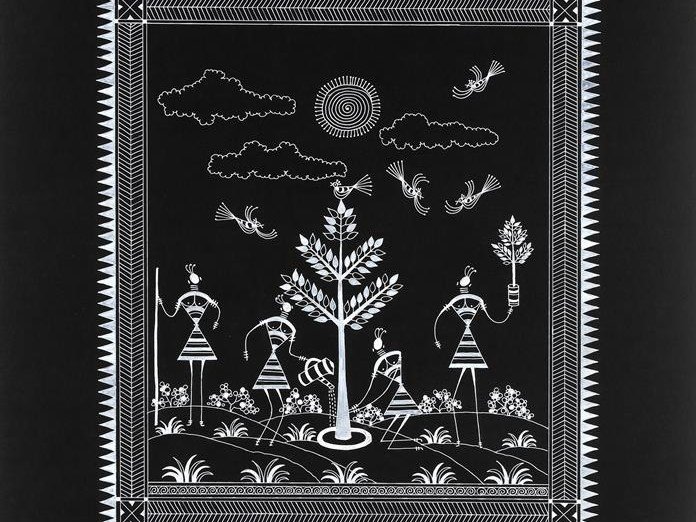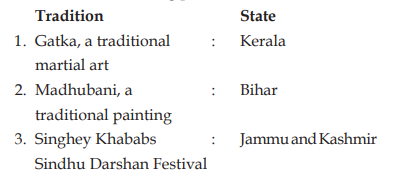Indian Heritage & Culture
Indian Painting (Part II)
- 28 Nov 2023
- 15 min read
For Prelims: Indian Painting, Folk Painting, Madhubani Painting, Geographical Indication status, GI Tag, Pattachitra, Patua Art, Kalighat Painting, Paitkar Painting, Ma Mansa, Kalamkari Paintings, Warli Painting, Thangka Painting, Manjusha Painting, snake painting, Phad Painting, Cheriyal Scroll paintings, Nakashi art, Balladeer community, Pithora Paintings, Saura Paintings, Painting of Bodhisattva Padmapani, Gupta paintings.
For Mains: Evolution of Folk Painting in India, Need to the Conservation of Folk Paintings
We have also covered other paintings in Part I of the TTP.
What are Folk Paintings?
Folk paintings in India represent a vibrant and diverse tapestry of artistic expression that traces its roots deep into the country's cultural heritage.
- These traditional art forms are a testament to the rich tapestry of regional cultures and narratives that have thrived for centuries. With techniques passed down through generations, folk paintings capture the essence of daily life, mythology, and spiritual beliefs, employing a vivid palette and distinctive styles unique to each region.
- These art forms not only serve as a visual chronicle of India's cultural mosaic but also stand as a testament to the enduring creativity of its people.
What are the Various Types of Folk Paintings?
- Madhubani Paintings: Traditionally done by the women of villages around Madhubani town, it is also called Mithila paintings.
- The paintings have a common theme and are ususally drawn from religious motifs of the Hindus, including Krishna, Rama, Durga, Lakshmi and Shiva.
- The figures in the painting are symbolic, for example, the fish depicts good luck and fertility.
- The paintings are also made depicting auspicious occasions like birth, marriage and festivals. Flowers, trees, animals, etc. are used to fill any gaps in the painting.
- Traditionally, these were painted on walls using rice paste and vegetable colours on a base of cow dung and mud. With time, the base changed to handmade paper, clothes and canvas, and still the natural colours were used.
- Since there is no shading, the paintings are two-dimensional. Some of the common features of these paintings include double line border, bold use of colours, ornate floral patterns and exaggerated facial features.
- Mostly women have passed on the skill of Madhubani painting from generations to generations. Since the art has remained confined to a specific geographical area, it has been given GI (Geographical Indication) status.
- Pattachitra: A traditional painting of Odisha, the name Pattachitra comes from a Sanskrit word patta, which means canvas/cloth and Chitra means picture.
- The paintings show a mix of classical and folk elements, with a bias towards the latter. The base of the painting is treated cloth while the colours used come from natural sources including burnt coconut shells, Hingula, Ramaraja and lamp black.
- No pencil or charcoal is used, rather brush is used to draw the outlines in red or yellow after which the colours are filled.
- The themes of these paintings are inspired by the Jagannath and Vaishnava cults, sometimes from the Shakti and Shaiva cults. Pattachitra on palm leaf is known as talapattachitra.
- Patua Art: The art of Bengal, Patua art dates back around a thousand years. It started out as a village tradition by painters telling Mangal Kavyas or auspicious stories of Gods and Goddesses.
- These paintings are done on pats or scrolls and for generations, the scroll painters or patuas have been going to different villages to sing their stories in lieu of food or money.
- Traditionally these were painted on cloth and told religious stories; today they are painted with poster paints on sheets of paper sown together, usually used to comment on political and social issues. These patuas mostly come from Midnapur district of the state.
- Kalighat Painting: A product of the changing urban society of Calcutta (now Kolkata) in 19th century, Kalighat paintings were done by the rural migrants who settled around the Kalighat temple in the then British capital (Calcutta).
- Watercolours were used on mill paper using brushes made of calf and squirrel hair. The painted figures has a plaque-like effect on neutral background given the shaded contours and articulated movements.
- Originally, the paintings depicted religious note, especially Hindu Gods and Goddesses. Over time, these paintings were used to express social sentiments.
- Kalighat paintings are considered first of its kind in the country to express subaltern sentiments and address customers directly.
- Paitkar Painting: Practiced by the tribal people of Jharkhand. This old form of painting has cultural association with Ma Mansa, one of the most popular goddesses in tribal household.
- These paintings are linked to the social and religious customs including giving alms and holding yajnas.
- The common theme of Paitkar paintings is ‘What happens to human life post death’. Although an ancient art, it is on the verge of extinction given the rate of its decline.
- Kalamkari Paintings: The name comes from kalam, i.e., a pen, which is used to paint these exquisite paintings. Bamboo pen with sharp point for color control. Cotton fabric base, vegetable dyes. Pen soaked in jaggery-water mix, applied with dyes.
- The main centers for this art are Srikalahasti and Machilipatnam in the state of Andhra Pradesh. The artists in the former create beautiful wall hangings. The images are drawn free hand and the inspiration comes from Hindu mythology. Textiles with handwork are also produced here.
- The artists in the latter area use different designs including the cartwheel, lotus flower, animals and interlacing patterns of flowers and leaves among other things.
- Warli Painting: The name of the painting comes from the people who have been carrying the painting tradition that goes back to 2500-3000 BC. They are called the Warlis, indigenous people that occupy mainly the Gujarat-Maharashtra border.
- These paintings have close resemblance to the mural paintings of Bhimbetka in Madhya Pradesh that date back to the pre-historic period.
- These ritualistic paintings have a central motif of a chaukat or chauk, which is surrounded by scenes portraying fishing, hunting, farming, dances, animals, trees and festivals.
- Traditionally, the paintings are done on the walls using very basic graphic vocabulary, including a triangle, a circle and a square. These shapes are inspired from nature, i.e., circle from sun or moon, triangle from conical shaped trees or mountains and square from sacred enclosure or piece of land.
- To represent a human or animal, two triangles are joined at the tip, with circles acting like their head. For painting only white pigment is used, which is made of a mixture of gum and rice powder.
- Thangka Painting: Presently belonging to the Indian States of Sikkim, Himachal Pradesh, Ladakh region and Arunachal Pradesh, Thangka were originally used as a medium of reverence that evoked the highest ideals of Buddhism.
- Thangkas are painted on a base of cotton canvas (white background) with paints made from natural vegetable dyes or mineral dyes.
- The colours used in the paintings have their own significance. For example, red stands for intensity of passion, be it love or hatred, golden is for life or birth, white is for serenity, black depicts anger, green represents consciousness and yellow shows compassion.
- Thangkas can be divided into three types according to their depiction and meaning:
- The first kind shows the life of Buddha from his birth to his enlightenment.
- The second kind is more abstract; it represents Buddhist beliefs of life and death including the ‘Wheel of Life’.
- The third kind represents paintings that are used for offerings to the deities or meditation.
- Manjusha Painting: This art form belongs to Bhagalpur region of Bihar. It is also known as Angika art, where ‘ang’ refers to one of the Mahajan Pada.
- Since snake motifs are always present, it is also called snake painting. These paintings are executed on boxes of jute and paper.
- Phad Painting: It is predominantly found in Rajasthan and is a scroll-type art. It is religious in nature and comprises of drawings of local deities, Pabuji and Devnarayan.
- Painted with vegetable colours on a long piece of cloth called phad, they are 15 feet or 30 feet long. The subjects have large eyes and round faces.
- They are of pompous and joyful narrative and scenes of procession are common.
- Cheriyal Scroll Paintings: Indigenous to Telangana state, it is a type of Nakashi art. The scrolls are depicted as a continuous story like comics or ballads by the Balladeer community.
- The common themes are Hindu Epics and Puranic stories. The artists use the scroll painting to narrate stories along with music, as they move to different places.
- They are often huge in size, going upto 45 feet in height. It has been accorded the GI status in 2007.
- Pithora Paintings: The paintings are done by some tribal communities of Gujarat and Madhya Pradesh and is said to serve religious and spiritual purpose. They are painted in the walls of the houses to bring peace and prosperity.
- They are drawn on special family-occasions as a ritual. Depiction of animals are common especially horses.
- Saura Paintings: They are made by Saura tribe of Odisha and are similar to Warli paintings. It is essentially a wall mural painting and is ritualistic.
- The Saura wall paintings are dedicated to Idital, the main deity of the Sauras.
- The painting is done mostly in white, while the backdrop of painting is red or yellow. The colours are extracted from minerals and plants.
- The human shapes are geometrical and stick–like.
Conclusion
Indian folk paintings reflects a diverse cultural heritage, with each art form showcasing a unique blend of tradition, spirituality, and regional narratives. Passed down through generations, these paintings serve as vibrant visual chronicles, capturing the essence of daily life, mythology, and religious beliefs. From the intricate Madhubani paintings to the narrative Cheriyal scrolls, each style not only preserves historical roots but also demonstrates the enduring creativity and cultural richness of the people of India.
UPSC Civil Services Examination, Previous Year Questions (PYQs)
Prelims
Q. Consider the following pairs: (2009)
Which of the pairs given above is/are correctly matched?
(a) 1 and 2 only
(b) 1, 2 and 3
(c) 2 and 3 only
(d) 3 only
Ans: C
Mains
Q. While banging out their salient features, distinguish between either ‘Madhubani’ Art and ‘Manjusha’ Art or’ Rajasthani’ schools of painting and the’ Pahari’ School of Painting. (2011)





